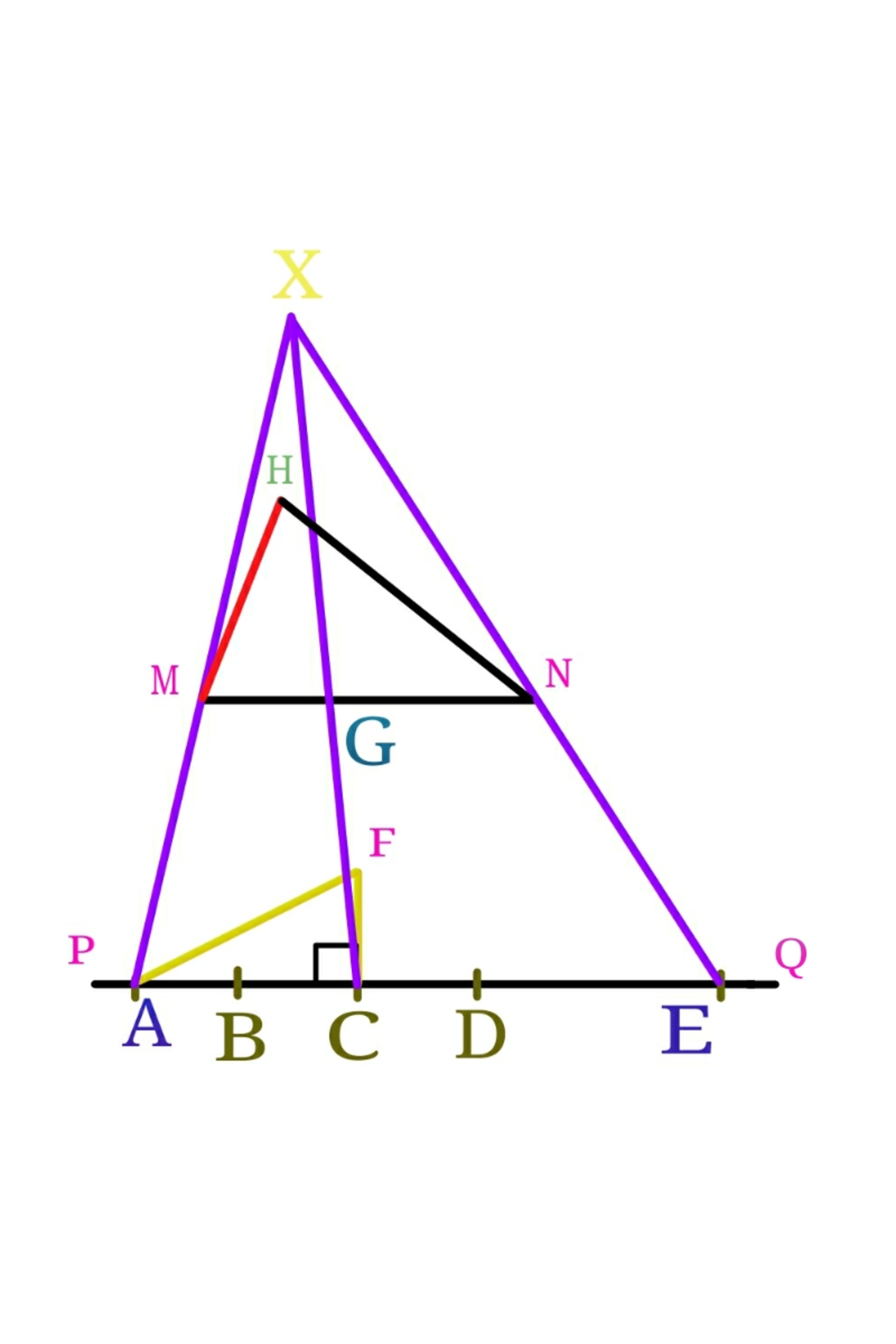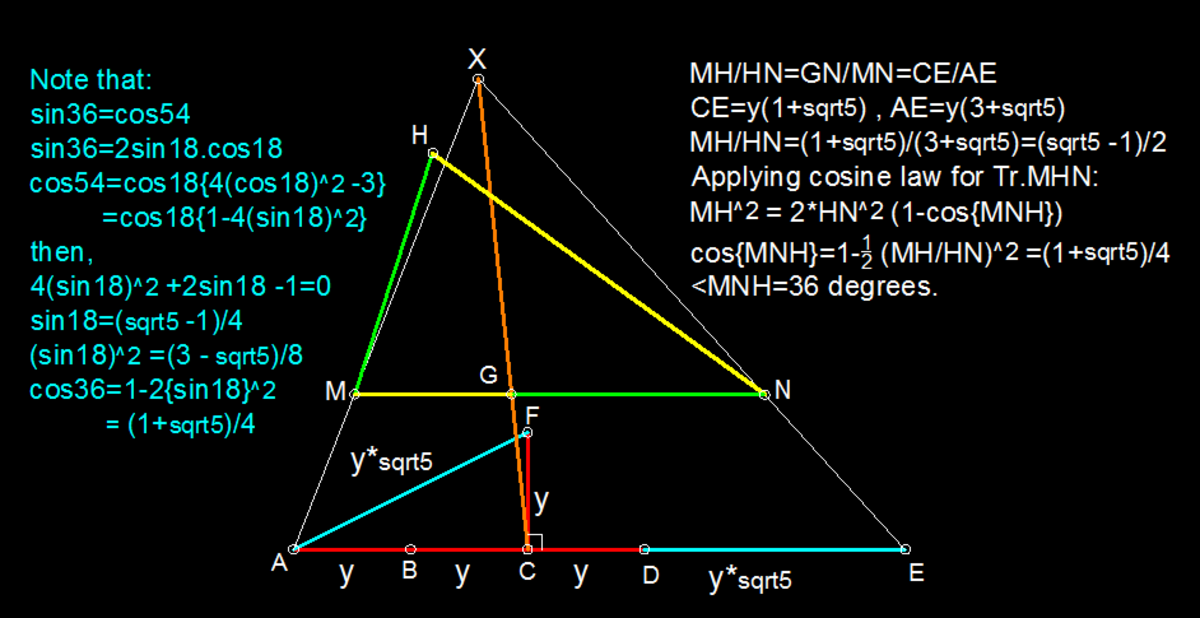Construction Is A Piece Of Cake! Right? (Part-4)

Sanskar, influenced by Mohit , Akshat and Anshuman , took two parallel lines and (as shown in the figure) such that , and started doing aimless constructions, the steps of which are given below:
( ) He marked four points such that and then he drew a perpendicular on and marked a point on it such that .
( ) Then he joined and marked a point on such that and doesn't lies on .
( ) He then joined which meets at (both lines extended).
( ) Then he joined which intersects at and then constructed such that and
Sanskar then wondered what could possibly be equal to (in degrees).
The answer is 36.
This section requires Javascript.
You are seeing this because something didn't load right. We suggest you, (a) try
refreshing the page, (b) enabling javascript if it is disabled on your browser and,
finally, (c)
loading the
non-javascript version of this page
. We're sorry about the hassle.
